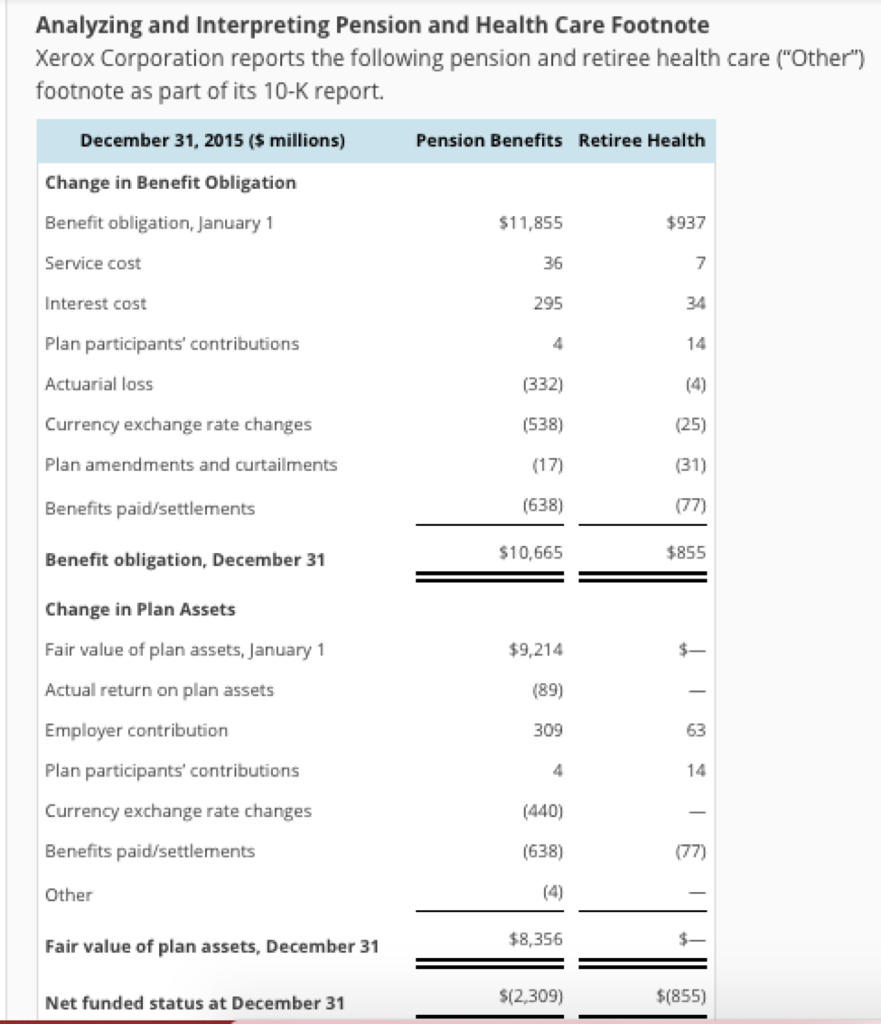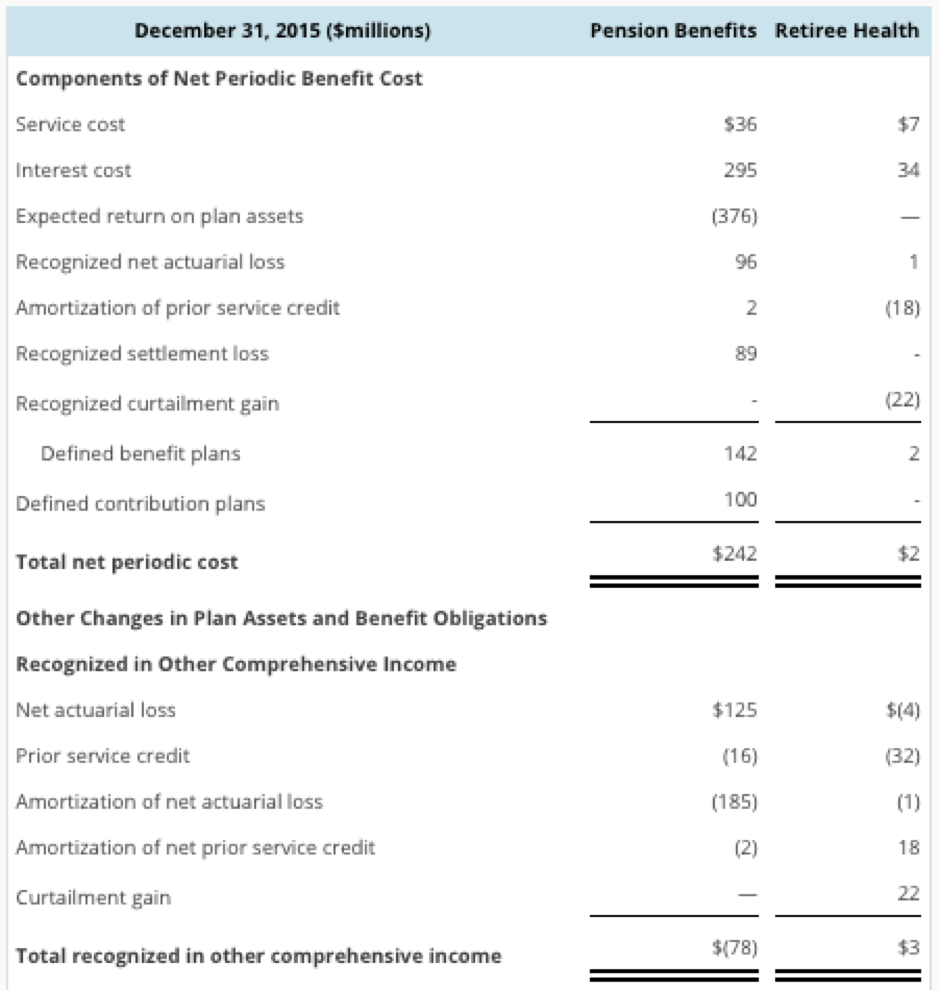Question
(a) Describe what is meant by service cost and interest cost (the service and interest costs appear both in the reconciliation of the PBO and


(a) Describe what is meant by service cost and interest cost (the service and interest costs appear both in the reconciliation of the PBO and in the computation of pension expense).
(A) Service cost represents the additional pension benefits earned by employees during the current year but paid to employees in the future. Interest cost is the expense we incur on funds borrowed by the pension plan.
(B) Service cost represents the wages earned by employees managing the pension plan during the current year. Interest cost is an expense that accrues on the pension obligation during the year.
(C) Service cost represents the additional pension benefits earned by employees during the current year but paid to employees in the future. Interest cost is an expense that accrues on the pension obligation during the year.
(D) Service cost represents the wages earned by employees managing the pension plan during the current year. Interest cost is the expense we incur on funds borrowed by the pension plan.
(b) What is the actual return on the pension and the health care ("Other") plan investments in 2015?
$Answer million
Was Xerox's profitability impacted by this amount?
(A) The actual return for the pension plans is the income or loss that is reported in Xerox's income statement. Because the "Other" (health care) plan is funded on a pay-as-you-go basis, it does not affect Xerox's profit until the benefits are paid.
(B) The expected return (not the actual return) on the pension plan assets impacts Xerox's income for 2015. Pension expense is reduced by this amount. Because the health care ("Other") plan is not funded, there are no assets generating a return, hence there is no expected return offset for this plan.
(C) Xerox's profit is reduced by the expected return on pension assets. Because the health care ("Other") plan is not funded, there are no assets generating a return, hence there is no expected return offset for this plan.
(D) The actual return for both plans is the income or loss that is reported in Xerox's income statement.
(c) Provide an example under which an "actuarial loss," such as the $332 million loss in 2015 that Xerox reports, might arise.
(A) A reduction in the amount of benefit payments.
(B) A decrease in the expected return assumption.
(C) A decrease in the actual return on plan assets.
(D) A decrease in the discount rate.
(d) What is the source of funds to make payments to retirees?
(A) pension and health care obligations
(B) pension and health care liabilities
(C) pension and health care assets
(D) operating cash flows
(e) How much cash did Xerox contribute to its pension and health care plans in 2015?
Pension = $Answer million
Health Care = $Answer million
(f) How much cash did retirees receive in 2015 from the pension plan and the health care plan?
Pension = $Answer million
Health Care = $Answer million
How much cash did Xerox pay these retirees in 2015? $Answer million
(g) Show the computation of the 2015 funded status for the pension and health care plans.
Do not use negative signs with your answers.
Pension : $10,665 million - $Answer million = $Answer million Answer (underfunded / overfunded)
Health Care : $0 million - $Answer million = $Answer million Answer (underfunded / overfunded)
(h) The company reports $125 million Net actuarial loss in the table relating to other comprehensive income, a credit of $16 million relating to Prior service credit, a loss of $185 million relating to Amortization of net actuarial loss, and a credit of $2 million relating to Amortization of prior service credit in the net periodic benefit cost table. Describe the process by which these amounts are transferred from other comprehensive income to pension expense in the income statement.
(A) These amounts remain in AOCI unless they exceed the greater of 10% of pension assets or PBO at the beginning of the year. If the accumulated amounts exceed the maximum, the excess is amortized to income over a 10-year period.
(B) These amounts remain in AOCI and are never amortized to income.
(C) These amounts remain in AOCI unless they exceed the greater of pension assets or PBO at the beginning of the year. If the accumulated amounts exceed the maximum, the excess is amortized to income over the remaining service lives of the employees.
(D) These amounts remain in AOCI unless they exceed the greater of 10% of pension assets or PBO at the beginning of the year. If the accumulated amounts exceed the maximum, the excess is amortized to income over the remaining service lives of the employees.
Analyzing and Interpreting Pension and Health Care Footnote Xerox Corporation reports the following pension and retiree health care ("Other") footnote as part of its 10-K report. December 31, 2015 ($ millions) Pension Benefits Retiree Health Change in Benefit Obligation Benefit obligation, January 1 Service cost Interest cost Plan participants' contributions Actuarial loss Currency exchange rate changes Plan amendments and curtailments Benefits paid/settlements $11,855 36 295 $937 7 34 14 (332) (538) (17) (638) $10,665 (25) (31) (77) $855 Benefit obligation, December 31 Change in Plan Assets Fair value of plan assets, January 1 Actual return on plan assets Employer contribution Plan participants' contributions Currency exchange rate changes Benefits paid/settlements Other $9,214 (89) 309 63 (440) (638) (77) $8,356 Fair value of plan assets, December 31 Net funded status at December 31 S(2,309) $(855) December 31, 2015 (Smillions) Pension Benefits Retiree Health Components of Net Periodic Benefit Cost Service cost Interest cost Expected return on plan assets Recognized net actuarial loss Amortization of prior service credit Recognized settlement loss Recognized curtailment gain S36 295 (376) 96 2 89 $7 34 (18) (22) 142 100 $242 Defined benefit plans 2 Defined contribution plans $2 Total net periodic cost Other Changes in Plan Assets and Benefit Obligations Recognized in Other Comprehensive Income Net actuarial loss Prior service credit Amortization of net actuarial loss Amortization of net prior service credit Curtailment gain Total recognized in other comprehensive income $125 (16) (185) $(4) (32) 18 $(78) $3Step by Step Solution
There are 3 Steps involved in it
Step: 1

Get Instant Access to Expert-Tailored Solutions
See step-by-step solutions with expert insights and AI powered tools for academic success
Step: 2

Step: 3

Ace Your Homework with AI
Get the answers you need in no time with our AI-driven, step-by-step assistance
Get Started


